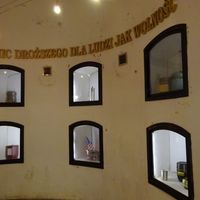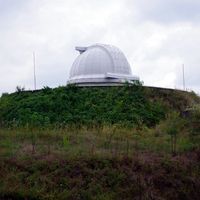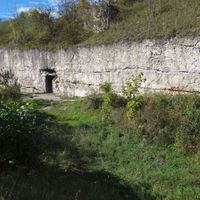Bielańsko-Tyniecki Landscape Park
6.95

Overview
The Bielańsko-Tyniecki Landscape Park, located in the Lesser Poland Voivodeship, encompasses areas of the city of Kraków as well as the municipalities of Czernichów and Liszki. Established in 1981, it covers an area of 63.59 km², with a buffer zone of 97.66 km². The park forms a section of the Vistula River valley and was once part of the Jurassic Landscape Parks Complex. Within the park, there are three larger forest complexes, including Lasek Wolski and the forests around Tyniec and Czernichów. It is home to numerous valuable Natura 2000 sites, such as the Dębnicko-Tyniecki Meadow Area and the Skawiński Meadow Area, as well as natural monuments, including an avenue of small-leaved linden trees and the Kryspinowska Cave. The park features four nature reserves, encompassing diverse ecosystems, from strict forest reserves to steppe fauna reserves. Additionally, the area protects five ecological sites, such as Uroczysko Kowadza and Zakrzówek. The park is also distinguished by its rich cultural heritage. Within its boundaries, there are numerous architectural monuments, including churches and monasteries, such as the Benedictine Abbey complex in Tyniec and the Church of the Assumption of the Blessed Virgin Mary in Kraków. It is also worth mentioning manor complexes and parks, like the Villa Decius and the manor complex in Ściejowice. Throughout the park, one can encounter interesting structures such as the Rosary Chapel in Czernichów and the Chapel of Our Lady of the Snows in Bodzów, which highlight the historical significance of the area. The park is not only a place of nature conservation but also an important cultural and historical center, inviting exploration of its natural and architectural treasures.
Location
Tickets
Powered by GetYourGuide
You can also find here:

District VII Zwierzyniec
8.07
Cracow

Kościuszko Mound in Krakow
7.54
District VII Zwierzyniec, Cracow

Church of the Most Holy Savior in Kraków
7.32
District VII Zwierzyniec, Cracow

Kościuszko Mound in Kraków
6.99
District VII Zwierzyniec, Cracow

District VIII Dębniki
6.9
Cracow

Skawina
6.89

St. Margaret and St. Judith Chapel
6.88
District VII Zwierzyniec, Cracow

Krakow Zoo
6.73
District VII Zwierzyniec, Cracow

Jagiellonian University Astronomical Observatory
6.71
District VII Zwierzyniec, Cracow

Twardowski's Rocks
6.59
District VIII Dębniki, Cracow
2025 Wizytor | All Rights Reserved